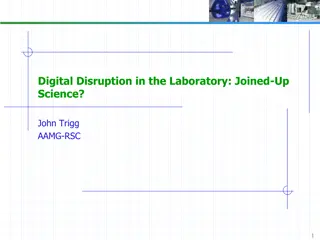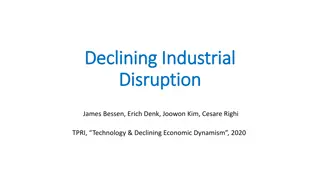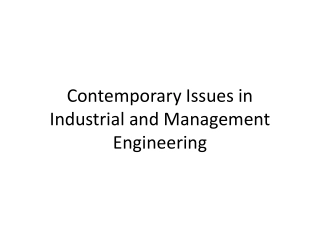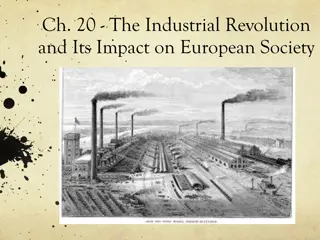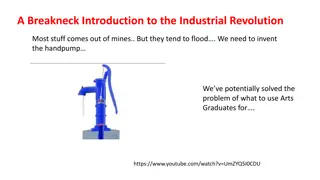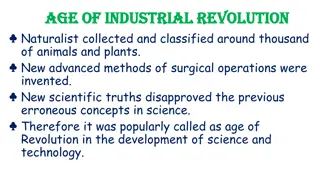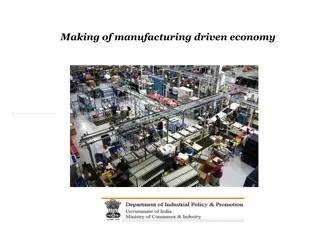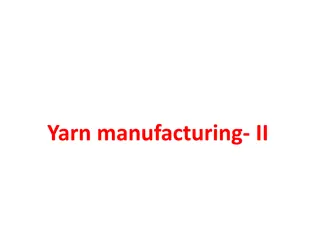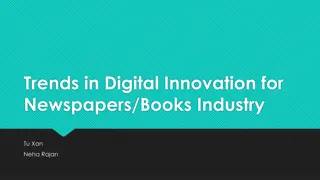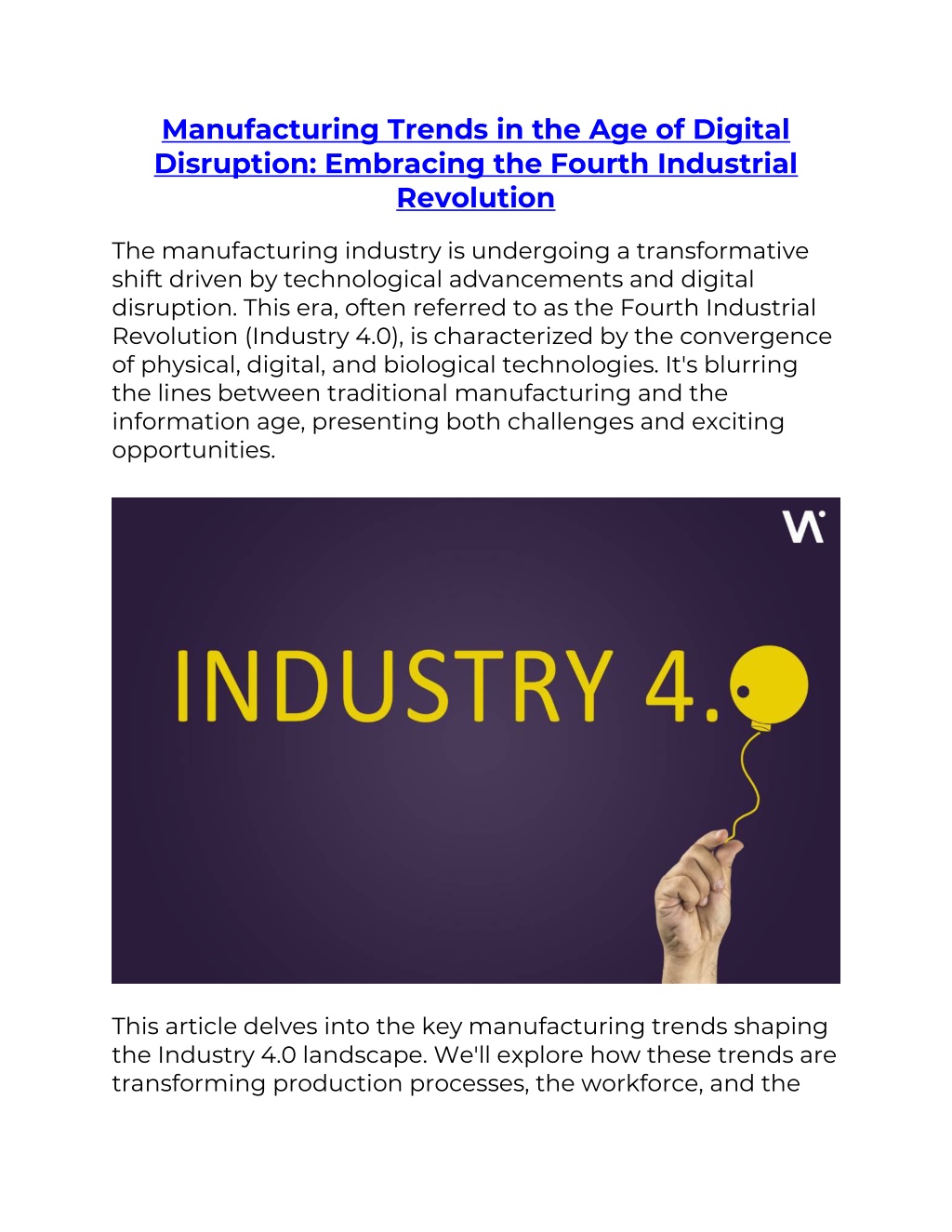
Manufacturing Trends in the Age of Digital Disruption Embracing the Fourth Industrial Revolution
The manufacturing industry is undergoing a transformative shift driven by technological advancements and digital disruption. This era, often referred to as the Fourth Industrial Revolution (Industry 4.0), is characterized by the convergence of physic
- Unleashing
- Power
- Power of Personalized
- Tailored Education
- future of education
- implementation
- digital media
- Elon musk
- cyber truck
Download Presentation

Please find below an Image/Link to download the presentation.
The content on the website is provided AS IS for your information and personal use only. It may not be sold, licensed, or shared on other websites without obtaining consent from the author. Download presentation by click this link. If you encounter any issues during the download, it is possible that the publisher has removed the file from their server.
E N D
Presentation Transcript
Manufacturing Trends in the Age of Digital Disruption: Embracing the Fourth Industrial Revolution The manufacturing industry is undergoing a transformative shift driven by technological advancements and digital disruption. This era, often referred to as the Fourth Industrial Revolution (Industry 4.0), is characterized by the convergence of physical, digital, and biological technologies. It's blurring the lines between traditional manufacturing and the information age, presenting both challenges and exciting opportunities. This article delves into the key manufacturing trends shaping the Industry 4.0 landscape. We'll explore how these trends are transforming production processes, the workforce, and the
overall business landscape within the manufacturing sector. By understanding these trends, manufacturers can adapt their strategies, embrace digitalization, and thrive in this new era. The Pillars of Industry 4.0: Several key technologies underpin the Industry 4.0 revolution: The Industrial Internet of Things (IIoT): Connecting machines, sensors, and devices to a network allows real- time data collection, remote monitoring, and increased automation. Big Data and Analytics: Leveraging massive datasets generated by connected machines provides valuable insights for optimizing production processes, predicting equipment failures, and improving overall efficiency. Cloud Computing: Cloud-based platforms offer manufacturers scalable and accessible data storage, computing power, and software solutions. Cybersecurity: With increased reliance on interconnected systems, robust cybersecurity measures are crucial to protect sensitive data and prevent operational disruptions. Artificial Intelligence (AI) and Machine Learning (ML): AI and ML algorithms are transforming manufacturing through predictive maintenance, quality control automation, and intelligent robotics. Transformative Trends in Manufacturing: 1. The Rise of Smart Factories: Industry 4.0 is ushering in the era of smart factories. These interconnected facilities utilize IIoT sensors, advanced
automation, and real-time data analytics to optimize production processes, minimize downtime, and improve overall efficiency. 2. The Rise of Collaborative Robots (Cobots): Cobots are robots designed to work alongside humans safely and efficiently. They handle repetitive tasks, freeing up human workers to focus on higher-level activities like design, problem-solving, and quality control. 3. Additive Manufacturing (3D Printing): 3D printing is revolutionizing prototyping and production by enabling the creation of complex parts directly from digital models. This offers increased design flexibility, reduced waste, and on-demand manufacturing capabilities. 4. Supply Chain Transparency and Agility:
Digital technologies enable real-time tracking of materials and finished goods throughout the supply chain. This improves transparency, enhances collaboration with suppliers and distributors, and allows for more agile responses to market fluctuations. 5. The Customization Revolution: Manufacturers are increasingly embracing mass customization, offering customers greater product personalization and configuration options. This trend is fueled by advanced manufacturing technologies and data analytics capabilities. 6. Data-Driven Decision Making: Industry 4.0 empowers manufacturers to make data-driven decisions based on real-time insights gleaned from sensors, production lines, and customer interactions. This fosters proactive problem-solving and continuous improvement. 7. The Evolving Workforce: The rise of automation will necessitate an upskilling of the manufacturing workforce. Employees will need to develop new skillsets related to data analysis, system operation, and working collaboratively with robots and AI. 8. Sustainability in Manufacturing: Digital technologies empower manufacturers to optimize resource usage, minimize waste, and implement sustainable production practices. This not only benefits the environment but also resonates with environmentally conscious consumers.
The Challenges and Opportunities of Industry 4.0: Challenges: Cybersecurity Threats: Connected systems create vulnerabilities that require robust cybersecurity measures to protect sensitive data and prevent operational disruptions. The Changing Workforce: Upskilling and reskilling the workforce will be crucial to adapt to automation and ensure employees remain competitive in the Industry 4.0 landscape. Investment Costs: Embracing Industry 4.0 often requires significant investments in new technologies and infrastructure. Balancing these costs with potential returns requires thoughtful planning. Opportunities: Increased Efficiency and Productivity: Smart factories and digital workflows have the potential to significantly improve production efficiency, reduce costs, and enhance overall productivity. Innovation and Competitive Advantage: Early adopters of Industry 4.0 technologies can gain a competitive edge by offering innovative products and services, fostering operational agility, and meeting evolving customer demands. Improved Sustainability: Digitalization empowers manufacturers to optimize resource usage, minimize waste, and achieve their sustainability goals. Strategies for Success in Industry 4.0:
Embrace a Culture of Innovation: Cultivate a culture of continuous learning and exploration. Be open to new technologies and embrace opportunities for digital transformation. Invest in Your Workforce: Prioritize upskilling and reskilling your employees to equip them with the skills needed to thrive in the Industry 4.0 environment. Develop a Data-Driven Strategy: Establish a data strategy that leverages real-time insights to optimize production, improve decision-making, and gain valuable customer insights. Partner with Technology Providers: Forge strategic partnerships with technology providers who can offer the expertise and support necessary to navigate the digital transformation journey.
Focus on Cybersecurity: Invest in robust cybersecurity measures to protect your interconnected systems from cyberattacks and data breaches. Start Small, Scale Up: Don't be overwhelmed by the scope of Industry 4.0. Identify a specific area for improvement, pilot a new technology, and scale up based on your successes. Focus on Collaboration: Collaboration between departments, with technology partners, and even across industries will be crucial for success in the Industry 4.0 landscape. Conclusion: The Future of Manufacturing is Now The digital revolution is reshaping the manufacturing industry. By embracing Industry 4.0 trends, manufacturers can unlock a new era of efficiency, innovation, and sustainability. While challenges exist, the opportunities presented by digitalization are immense. By investing in your workforce, adopting data-driven strategies, and partnering with the right technology providers, manufacturers can navigate this transformation and emerge as leaders in the Industry 4.0 era. The future of manufacturing is not just on the horizon; it's here, and it's digital. Are you ready to embrace it?




